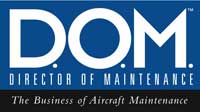AP Mechanic (Gulfstream)
As an A P Technician II, you will be responsible for performing routine maintenance and major inspections on Gulfstream corporate aircraft.
What you'll do:
- Adjust, align, and calibrate aircraft systems, using hand tools, gauges, and test equipment.
- Examine and inspect engines or other components for cracks, breaks or leaks.
- Disassemble and inspect parts for wear, warping, or other defects.
- Assemble and install electrical, plumbing, mechanical, hydraulic and structural components and accessories using hand tools and power tools.
- Service and maintain aircraft systems by performing tasks, such as flushing crankcase, cleaning screens, greasing moving parts, and checking brakes.
- Repair, replace, and rebuild aircraft structures, functional components, and parts, such as wings and fuselage, rigging and hydraulic units.
- Read and interpret manufacturers and airlinersquo;s maintenance manuals, service bulletins, and other specifications to determine feasibility and method of repairing or replacing malfunctioning or damaged components
- Must be authorized to work in the U.S.
- Airframe and Powerplant License required, high school diploma or equivalent required.
- Minimum of 2 years corporate jet experience performing scheduled and unscheduled maintenance to include: 12/24/36/72-month inspections.
Preferred Characteristics:
- Gulfstream maintenance experience (any model GII through G550) preferred
- Basic knowledge of operating a personal computer or laptop.
- Knowledge of job-specific machines and tools, including their designs, uses, repair, and maintenance.
- Capable of repairing machines or systems using the needed tools
- Ability to determine the kind of tools and equipment needed to do a job
- Able to perform routine maintenance on equipment and determine when and what kind of maintenance is needed.
- Capable of determining causes of operating errors and deciding what to do about it.
- Able to perform tests and inspections of products, services or processes to evaluate quality or performance.
- Able to install equipment, machines, wiring, or programs to meet specifications
- Ability to control operations of equipment or systems
- Ability to use logic and reasoning to identify the strengths and weaknesses of alternative solutions, conclusions, or approaches to problems.
- Able to monitor gauges, dials or other indicators to make sure a machine is working properly.
